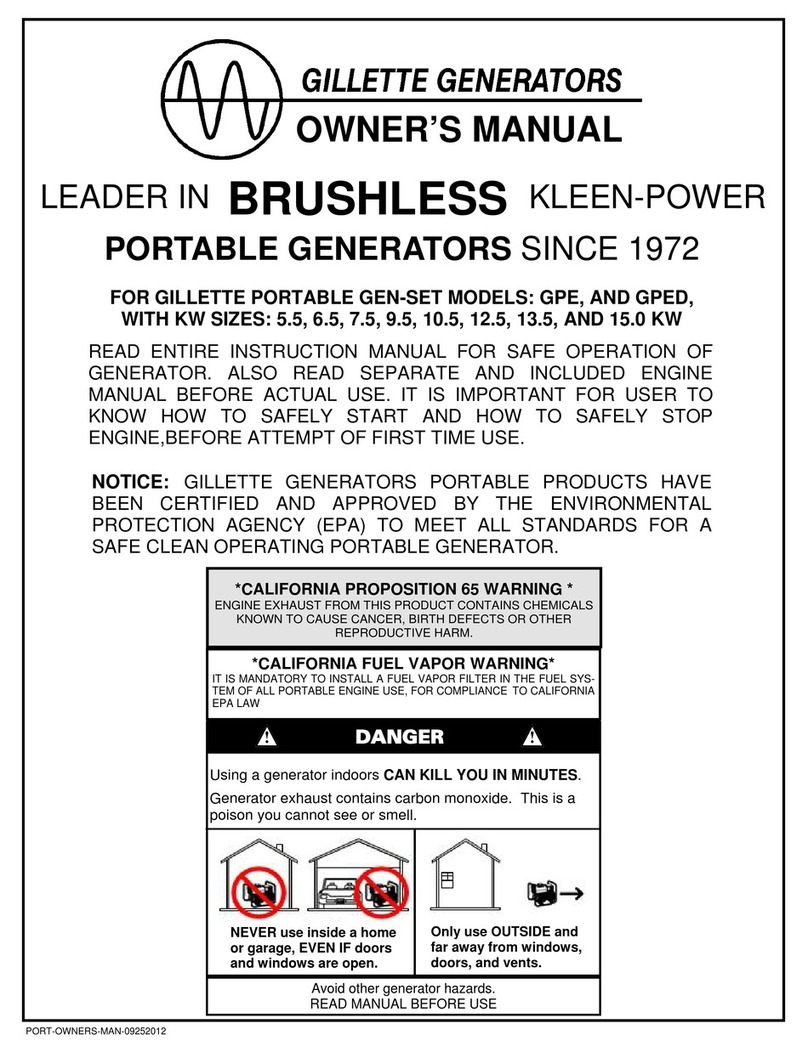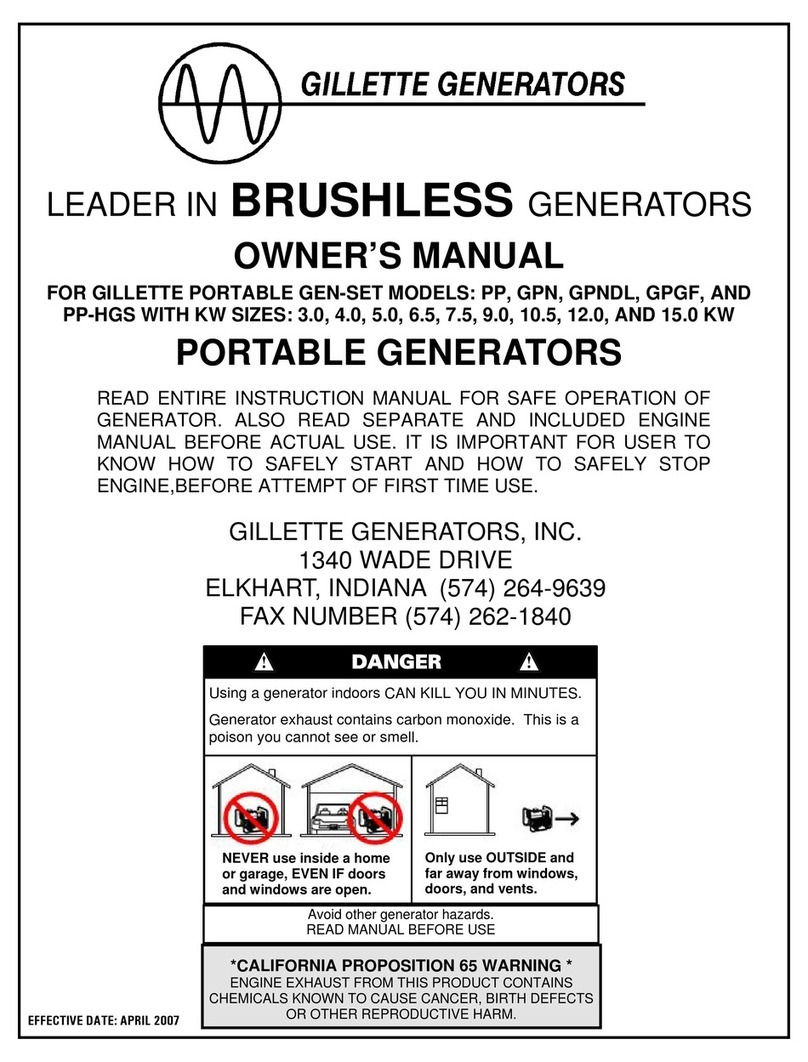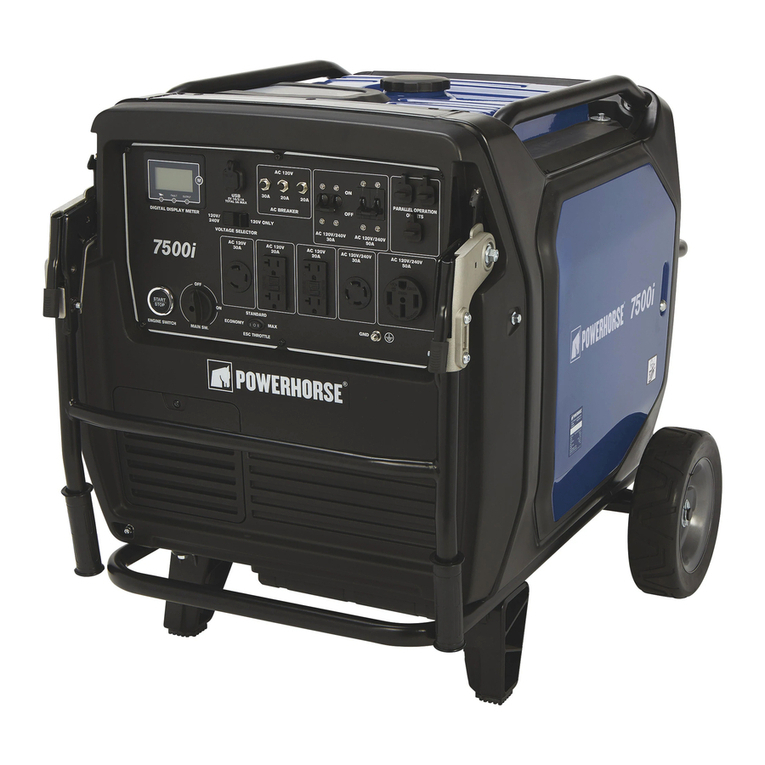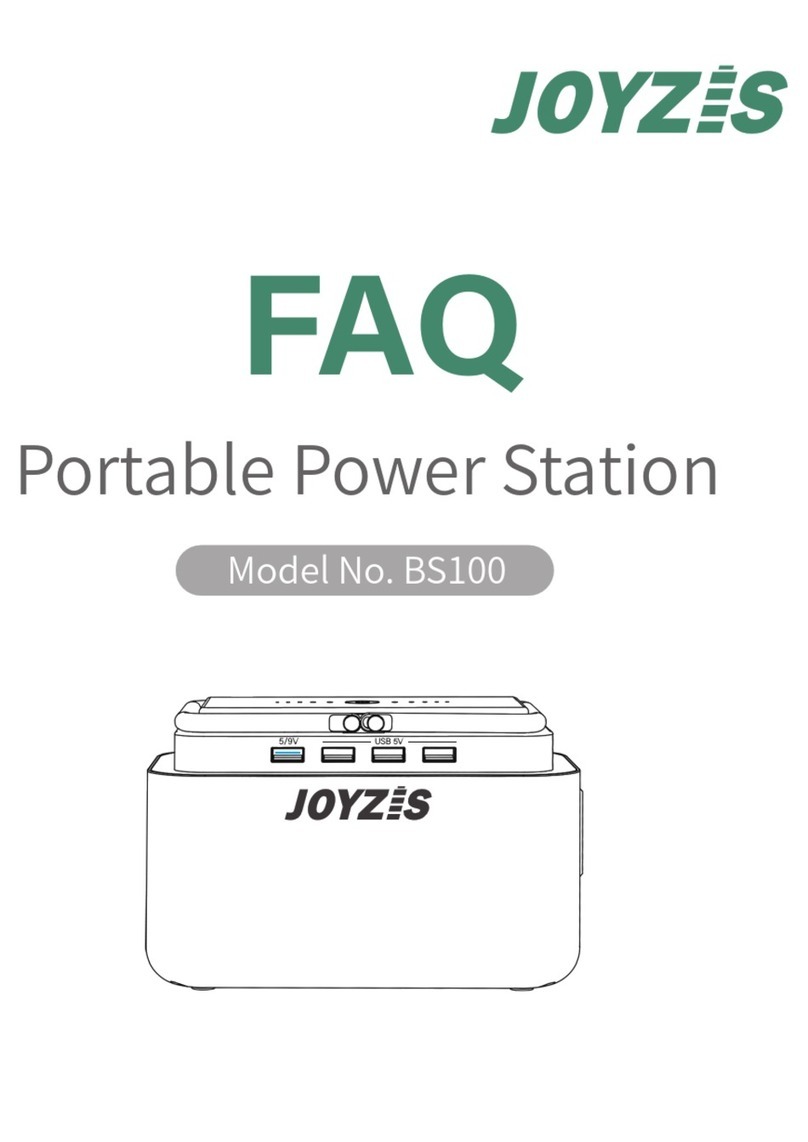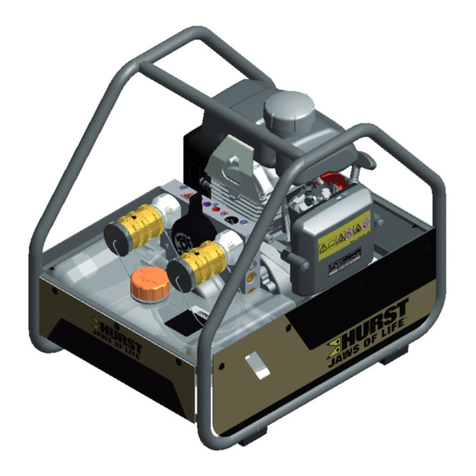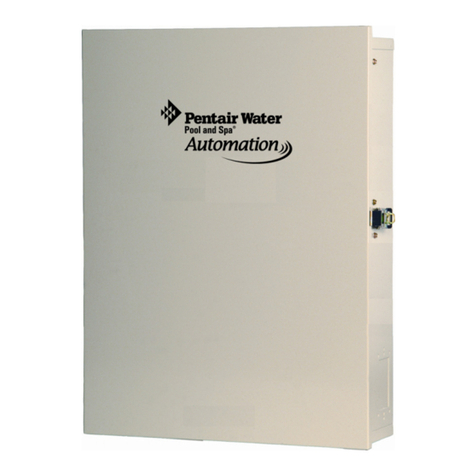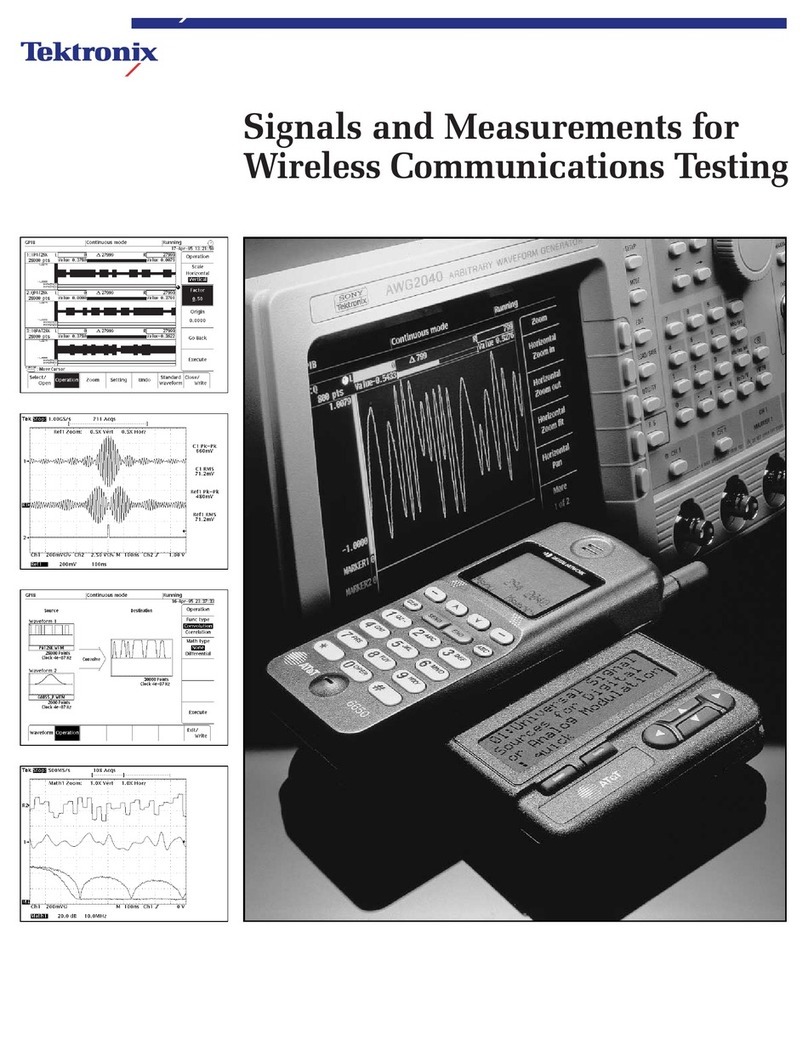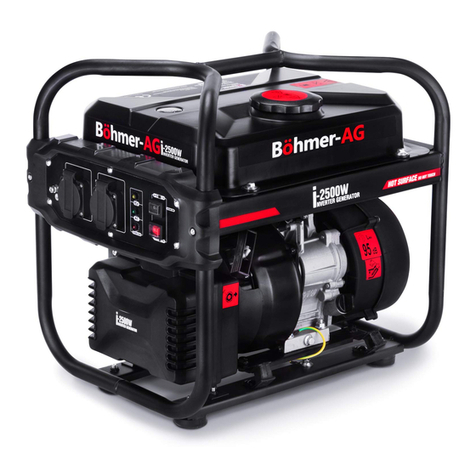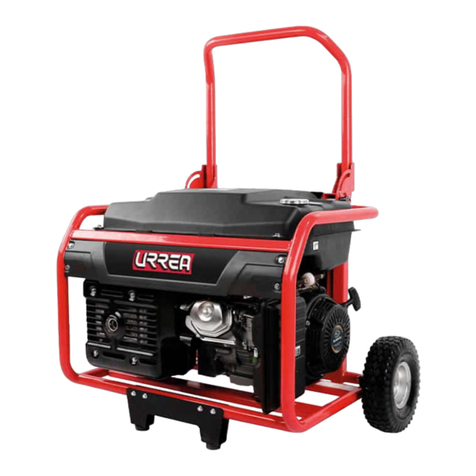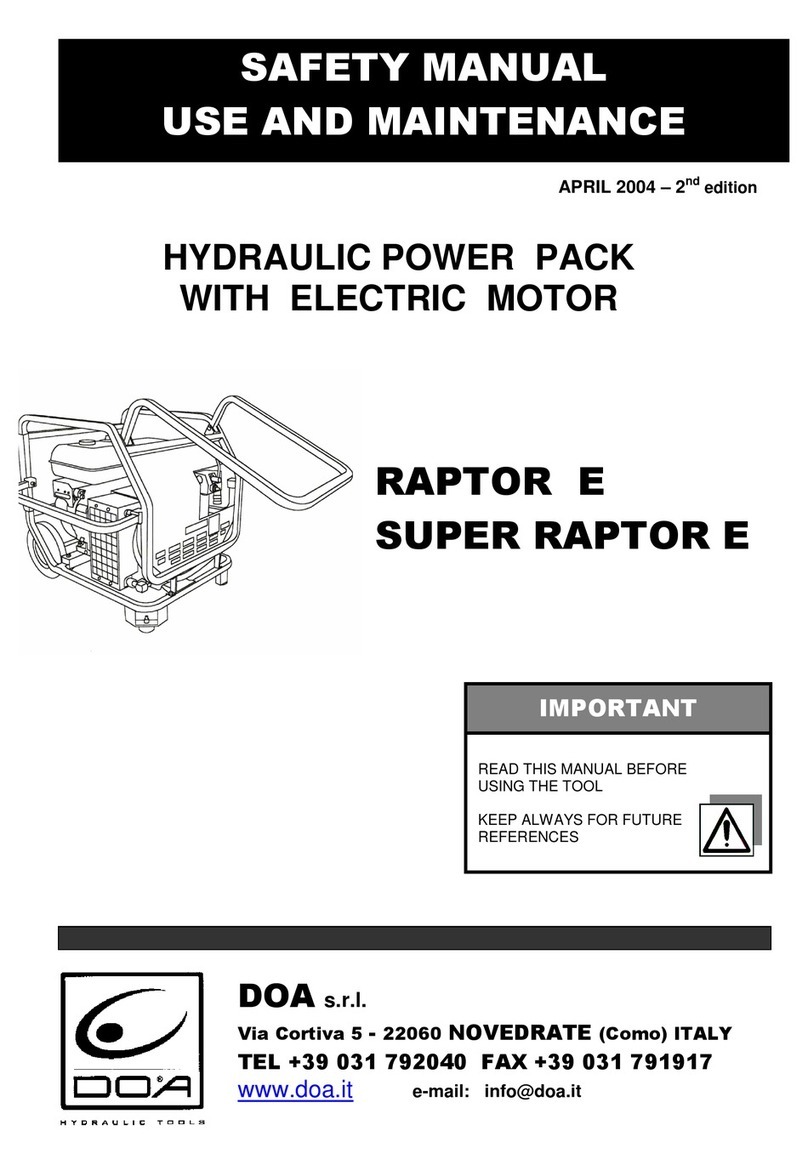Gillette SPS-100 Quick start guide

OPERATION AND
INSTALLATION
GUIDE
FOR MODELS:
SPS-100, SPH-120, SPS-120, & SPV-160
GILLETTE GENERATORS
AUTOMATIC POWER SYSTEMS

PAGE 2
TABLE OF CONTENTS
Page
Introduction, General Cautions,Warnings, & Danger Points ------------------3-6
Un-packing and Inspection of your Generator Set ------------------------------6-7
Pre-installation and Plot Planning of your Generator Set -----------------------7-9
Know your Gillette Generator Set----------------------------------------------------10
Know your Gillette Automatic Control System ------------------------------------11
Gaseous Dry Fuel System : Natural Gas (NG) -------------------------------------12-13
Gaseous Dry Fuel System : Liquid Propane Gas (LPG) -------------------------14-15
Prepare for Generator Operation: ---------------------------------------------------15-18
Access to Interior, Battery Selection & Installation, Electricians Wiring
Installation, & Final Preparations before Start-up
Additional Hi-Lights of (8) Point Diagnostic Panel -------------------------------18
Changing Fuel from NG to LPG at Job-Site ----------------------------------------19-20
Initial Start-Up ----------------------------------------------------------------------------20-21
General Service Tips -------------------------------------------------------------------21-22
Dimensional Print: Models SPS-100, SPH-120, & SPS-120 -----------------------23-24
Dimensional Print: Model SPV-160 --------------------------------------------------25
Service Schedule ------------------------------------------------------------------------26
Maintenance Record--------------------------------------------------------------------27

PAGE 3
THIS MANUAL CONTAINS IMPORTANT IN-
STRUCTIONS THAT MUST BE FOLLOWED DUR-
ING INSTALLATION, OPERATION, AND MAIN-
TENANCE OF THIS GENERATOR SET AND ALL
ASSOCIATED EQUIPMENT.
Thoroughly read this operators manual before install-
ing, operating, or servicing your generator set. Safe
operation and best performance can be achieved
only when this generator is operated and maintained
properly.
INTRODUCTION
Thank you for your purchase of this SENTRY-PRO
automatic start/stop home standby generator set by
GILLETTE GENERATORS, INC. This generator set is
intended for use as an alternative source of electric
power to operate normally required household elec-
tric loads, during a utility power failure.
This generator set has an all weather protected metal
enclosure, MADE EXCLUSIVELY FOR OUTDOOR
INSTALLATION, and will operate on either vapor
withdrawal liquid propane gas (LPG) or natural gas
(NG). CAUTION: This generator does not comply
with emergency power as defined in NFPA 70 of Na-
tional Electric Code.
GILLETTE GENERATORS has made every effort to
present a modern, safe generator set that will give
you a safe, clean supply of an alternative source.
However, because each installation is different, it is
impossible for this manual and GILLETTE to know and
advise against all possible hazards. The listings,
warnings, and cautions in this manual and on tags and
decals affixed to the generator set, are therefore,
NOT ALL INCLUSIVE. If a certain procedure, work
method, test method, or operating procedure is used,
and is not recommended by GILLETTE, the person or
company responsible for the generator modification,
must assume all responsibility for safety and correct
operation for the operator, service technician, and all
others within generator area.
READ YOUR GENERATOR SET MANUAL, PLUS
SEPARATE ENGINE OPERATORS MANUAL AND
AUTOMATIC TRANSFER SWITCH MANUAL
CAREFULLY. KNOW YOUR EQUIPMENT BE-
FORE YOU USE IT. CONSIDER ANY POSSIBLE,
POTENTIAL HAZARDS, BEFORE OPERATING
YOUR GENERATOR SET.
CAUTION: Only current licensed electrical and
plumbing contractors should install your home
standby generator. All phase of installation must
comply with all applicable local and national codes,
industry standards, and regulations.
THE GILLETTE WARRANTY IS AUTOMATICALLY
NULL AND VOID WITHOUT THE USE OF LI-
CENSED ELECTRICIANS AND PLUMBERS, AND
SO NOTED ON THE REGISTRATION FORM THAT
IS TO BE RETURNED TO GILLETTE GENERA-
TORS, INC.
IMPORTANT SAFETY RULES
The safety alert symbol is used as a signal for
possible danger, caution warning, or general hazard.
DANGER: Indicating a hazard that, if not avoided,
will result in death or serious injury.
WARNING: Indicating a hazard that, if not
avoided, could result in a death or serious injury.
CAUTION: Indicating a hazard that, if not avoided,
might result in minor or moderate injury.
NOTICE: Indicating a hazard that, if not avoided,
could result in general damage.
Read and understand the above listed safety alert
symbols, plus the following symbols that are used
through out this manual.
A LIST OF HAZARD SYMBOLS
AND THEIR MEANINGS
SAVE THESE INSTRUCTIONS
Explosion
Toxic Fumes
Fire
Chemical BurnExplosive Pressure
Rotating Parts Hot Surface
Electrical Shock

PAGE 4
NOTICE
●For all safety reasons to the equipment, GILLETTE
recommends installation, start-up and service be per-
formed by experienced personnel.
●Sufficient, un-obstructed flow of cooling air is criti-
cal for correct generator operation.
●The generator must be installed outdoors, away
from an over-hang roof where ice and snow could
avalanche onto generator and away from sprinklers
that could throw water up into cooling vents of gen-
erator.
●Electric load applied to generator should be no
more that 75% of generator maximum rating to avoid
constant maximum generator load use.
●Generator should not be exposed to excessive and
constant moisture, dust, dirt, or corrosive environ-
ments.
●If connected loads cause over heating or excessive
vibration, an overload condition exists. Remove
loads until condition stabilizes.
●Do not sit, step, or load heavy items on generator
roof. Added stress can cause breakage.
●Do not start generator with air cleaner, air cleaner
cover, or oil dipstick removed, nor with oil drain hose
in open drain position.
●Keep a fire extinguisher rated “ABC” close by your
generator and be familiar on how to use it. Consult
your local fire department, for additional fire preven-
tion ideas.
●Be sure that a positive manual fuel valve be in-
stalled in fuel line feeding generator.
●Do not tamper with engine controls, generator is
factory adjusted to supply rated voltage and speed.
●Never operate generator when ambient tempera-
ture is over 105º F, as electrical insulation system may
fail.
STARTING BATTERY PRECAU-
TIONS
Starting batteries are not furnished with
your generator set, but they are available
through your installing contractor. The
home standby generator requires a Group
36, 12 VDC fully charged battery with mini-
mum 390 cold cranking amps.
●Released battery electrolyte can burn your skin
and eyes and is toxic.
●When electrolyte touches skin, wash it off immedi-
ately with water and seek medical attention. When
electrolyte contacts eyes, flush thoroughly with water
and seek medical attention.
●Spilled electrolyte must be washed away with an
acid neutral agent. Use a solution of one pound bicar-
bonate of soda to one gallon of water, and wash down
acid effected areas until evidence of acid foaming
reaction has ended.
●A battery provides risk of electric shock. Remove
watches, rings, or other metal items when working
with batteries. Use tools with insulated handles.
●When disconnecting battery cables, always dis-
connect the battery charger first, the positive battery
cable second, and negative battery cable last. When
reconnecting cables, always reconnect the positive
battery cable first, then negative cable, and recon-
nect battery charger last, to reduce possible arching.
●Discharge body static electricity by touching a
grounded metal surface on generator before touching
battery.
●Do not dispose of batteries in a fire and do not
open or mutilate a battery, as the battery is capable of
exploding.
●Lead acid batteries present a risk of fire or explo-
sion because they generate hydrogen gas, within. Do
not smoke, nor have flame or spark in a battery area.
WARNING
The engine exhaust from this product contains
chemicals known to the state of California to cause
cancer, birth defects, or other reproductive harm.
WARNING

PAGE 5
ELECTRICAL HAZARDS
A generator produces dangerous electric
voltages and can cause a fatal electric
shock and will cause sudden illness, dizziness, and
incoherent actions.
●Despite the safe design of this GILLETTE genera-
tor, operating it carelessly, neglecting its normal
maintenance, or being ill informed of proper opera-
tions can cause possible serious injury or death.
●Avoid contact with bare wires, connection points,
etc., while generator is running.
●Do not touch any kind of electrical circuit while
standing in water, while barefooted, or while hands or
feet are wet or moist.
●Never wear any type of jewelry while working on a
generator. Jewelry will conduct electricity, causing
electric shock.
●If generator must be serviced while it is running,
stand on a dry, insulated surface from ground to re-
duce shock hazard. Never service a generator in the
rain or snow.
●Do not allow unqualified or ill-experienced per-
sons to operate or service generator.
●Remain alert at all times. Never work on a genera-
tor when you are physically or mentally fatigued.
●This generator is equipped with a ground terminal.
Always complete the grounding path from generator
to an external grounding source to prevent possible
electric shock.
●In case of electric shock, shut the generator down
at once. If this cannot be done, free the victim from
source of live electric power. AVOID ANY DIRECT
CONTACT WITH VICTIM OR THE LIVE ELEC-
TRIC POWER. Use a dry piece of wood, a dry rope,
or any other such non-conductive item, to free the
victim from source of power. If victim is semi or to-
tally unconscious, apply CPR (cardio-pulmonary re-
suscitation) and call for medical help immediately.
CARBON MONOXIDE POISON
A running engine produces a poisonous gas
from its muffler exhaust pipe. This is an odorless, in-
visible, and colorless poison that cannot easily be
detected. Breathing carbon monoxide will cause fa-
tigue, headache, dizziness, vomiting, fainting, and in
prolong conditions, even death.
●Operate generator only outdoors, where adequate
ventilation is available. Avoid generator installations
under decks, inside garages or carports, in base-
ment, along side home exterior within five feet of
home vent, roof overhang vent, a window that can be
opened, or other such home invasion points. Use
same precautions when installing generator at prop-
erty line, close to a neighbor’s home, or any buildings
that house animals.
POTENTIAL BURN OR FIRE
CONDITIONS
Contact with exhaust muffler and exhaust
pipe can result in serious burns.
Exhaust heat may ignite combustibles such as leaves
or other such debris that is allowed to accumulate
around base of generator where exhaust exits.
●Do not touch hot exhaust or engine parts, and
avoid hot exhaust gases.
●Keep at least a three foot clearance on all sides of
generator.
●Do not install generator any closer than five feet
from any combustibles or buildings with walls having
less than one hour, fire rating.
●Code of Federal Regulation (CFR), Title 36, states
that generators must have a spark arrestor attached to
muffler outlet pipe, to eliminate sparks from engine
operation. USDA Forest Service standard #5100-C
requires spark arrestor protection when generator is
operated within federal parks and forests.
●Generator installation must always comply with
local codes, standards, laws, and regulations. Check
with your local fire department to learn of these pre-
cautions. Keep a fire extinguisher (rated “ABC” by
NFPA as appropriate use on generator fires) nearby,
at all times. Keep the extinguisher properly charged
and become familiar with its use.
DANGER
DANGER
WARNING

PAGE 6
FIRE OR EXPLOSION CONDITIONS
Gaseous fuels such as natural gas (NG) and
liquid propane (LP) are extremely explo-
sive. Make sure the fuel supply system is
installed in compliance with local and state
fuel codes and regulations. Fuel leaks when ignited,
can cause fire and explosion, resulting in harm or
possible death.
●Before initial generator start-up, all fuel system
lines must be purged and leak tested according to
applicable codes by experienced service personnel.
No leaks are permitted.
●Do not smoke or allow open flame near generator
while servicing fuel system or battery. Lead acid bat-
tery will emit a highly explosive hydrogen gas that
can be ignited. Leaks in LP or NG system can be ig-
nited. Both are conditions that can cause fire and/or
explosion, leading to possible death.
●Do not operate generator if smell of fuel is de-
tected.
●Wipe up any oil spills immediately. Remove any
debris that has accumulated inside or around genera-
tor base and housing.
●Always maintain a scheduled inspection of entire
fuel system and starting battery, looking for leaks or
other negative conditions.
Following is a list of potential events that might result
in minor or moderate injury or damage to the genera-
tor.
●Never operate generator with oil dipstick partially
seated or completely missing.
●Never operate generator without air cleaner and
cover in place.
●Always check oil drain hose or radiator drain hose
for leaks.
●Generator operating speeds beyond 3750 RPM
increase risk of operator injury and engine damage.
●Never insert any objects through generator cool-
ing slots.
●The control panel and wiring access area doors
must be installed at time of operation.
●If connected electrical items overheat, disconnect
them immediately.
●Immediately shut down generator if it looses elec-
trical output, shows sparks, smokes, emits flames,
vibrates, or shows any other abnormal operation.
●Do not modify generator design.
●Do not modify carburetion system, as it is factory
set for C.A.R.B./EPA emissions certification.
This concludes the limited hazard listing. However,
GILLETTE cannot possibly anticipate every possible
hazard. Therefore, the warnings in this manual, plus
the warning tags and decals attached to the generator
are not all inclusive. If the generator operator has a
different operating method, other than described in
this manual, than operator becomes responsible to
make sure that different procedure, work method, or
operating method is totally safe, against harm and
hazards to operators, buildings or environments.
UNPACKING AND INSPECTION
After receiving the generator, note that it is mounted
on a heavy wood skid base and protected by a multi-
ply cardboard container. While the transportation
carrier is still present, note the condition of skid and
cardboard box. If noticeable damage is apparent,
immediately remove cardboard box and inspect gen-
erator for possible freight damage. If damage occurs,
make a note of damage on carrier’s freight bill and
have truck driver sign his name on the freight bill,
under “Consignor’s memo of loss or damage”.
If shipping container shows damage of any kind, and
time does not permit container removal for actual
generator inspection, while transportation carrier is
still available, be sure to:
• Make note of container damage “with possible
interior product damage” on carrier’s freight bill.
• Have truck driver sign his name on freight bill
under “Consignor's Memo of Loss or Damage”.
This action will help prove your case against shipper.
Always save shipping materials in the event that gen-
set must be sent back to factory due to need of exten-
sive repairs.
If damage is noticed after carrier leaves, contact the
carrier for “concealed damage” form. NOTE: Miss-
ing or damaged parts on generator, is not a warranty
claim.
WARNING
CAUTION

PAGE 7
GENERATOR CONTENTS
The GILLETTE home generator set is supplied with
the following components:
●Home generator system within soundproofed all
weather metal enclosure (Depending on option
choice, this can be an open set or a super-silent en-
closure add).
●Residential muffler system for quiet operation.
●Choice of (3) gen-set mounting systems:
A) Base direct mounting to concrete slab.
B) Base direct mounting to crushed gravel base,
secured in ground with ground stakes.
C) Base with plastic pad for floating mount on
crushed gravel.
●Flexible gas fuel hose.
●Four lifting holes with cover plugs.
●Two locking door keys (NOTE: One key fits all
locks.)
●One spare 10 amp fuse. (Located just above fuse
holder in control panel wiring area)
●Diagnostic LED panel.
●One owner/operator panel.
NOTE: All accessory items will be pre-mounted and
wired to generator. If separate automatic transfer
switch (ATS) is ordered, it is placed on top of genera-
tor shipping box and steel banded in place.
AUTOMATIC TRANSFER SWITCH (ATS)
If this generator set is used to provide tem-
porary electric power to circuits when loss
of normal utility power occurs, it is required by Na-
tional Electric Code, to install an automatic transfer
switch (ATS).
The ATS must isolate the home electrical system from
the utility electrical distribution system when the
home generator is operating (see NEC 700, 701, and
702). Failure to isolate an electrical system with an
approved ATS will result in damage to home genera-
tor and also can result in severe injury or death to
utility power workers who may receive electrical
back-feed shock from the home generator set.
The automatic transfer switch is an optional selection
and can be used with any model GILLETTE home gen-
erator set. All installation procedures, operating cau-
tions, and warranties are responsibility of the sepa-
rate manufacturers of the ATS.
PRE-INSTALLATION PLANNING
The beginning installation requires some thought and
planning. The following illustrations are meant to fa-
miliarize reader with typical installation circum-
stances and to plan the best installation possible.
First, Federal, State, and local codes may be a factor.
The local fire department can be of help on learning
these codes. As with all generators, your generator
must be installed in accordance with current NFPA-37
and NFPA-70 standards. Contact your local electrical
inspector or city hall to insure you are aware of all
codes and regulations. Contact your natural gas sup-
plier to verify that increased BTU gas demand can be
handled with existing NG gas meter. The same is true
for LPG fueled generators.
The most common fuel mistakes are:
A) Not a dedicated fuel line from fuel source to gen-
erator, on either LPG or Natural Gas fuel.
B) Not having a dedicated primary fuel regulator for
only the generator, while using LPG tank.
C) Wrong fuel pressures. (See fuel pressure informa-
tion on page 14)
D) Not understanding that fuel pipe diameter must
increase in direct proportion to fuel line length. (See
gas charts on page 12 for further details)
E) Wrong primary regulator. This is a common prob-
lem, using an existing regulator on a LPG Tank is typi-
cally too small for the supply needed for a generator.
Locate the generator site. It should be as close as
possible to the natural gas meter, and as close as pos-
sible to the home electrical distribution panel.
Determine the type of generator anchoring. There
are three types:
1) ACCEPTABLE: Generator is mounted on a com-
posite (plastic) pad, placed on a bed of pea gravel or
crushed stone. It “floats” in place. (See Illustration
#1)
2) ACCEPTABLE: Generator is mounted directly on a
bed of pea gravel or crushed stone (no composite
pad) and held in place with ground stakes. This in-
stallation is for locals that require fixed non-moveable
generator installation. (See Illustration #2)
DANGER

PAGE 8
3) PREFERRED: Generator is mounted directly on a
concrete slab, 4 inches thick, extending 6 inches be-
yond generator perimeter, and bolted in place. This
method is for those locals with “high wind” consid-
erations. (See Illustration #3)
If gravel bed is chosen, its perimeter must be eight
inches larger than generator base. Dig a rectangular
area six inches deep, cover with landscape cloth (so
drainage can take place) and fill with pea gravel or
crushed stone. Final gravel level must be two to three
inches higher than original level to ensure water run-
off away from generator. A normal plastic landscape
border can be used between grass and gravel area to
provide a more attractive installation.
Compact and level the stone. Place generator on
stone using either the “composite” pad (optional
equipment) or place aluminum generator base di-
rectly on gravel, using ground stakes for a fixed in-
stallation.
1) Always install your generator within 20 feet from natural
gas meter. Further distances may cause “starving” of fuel
from generator engine.
2) Exhaust end must always be turned away or parallel
with building and minimum 5 feet away.
3) Exhaust end is not to be directed towards play ar-
eas, patios, under canopies or overhangs, or where people
or animals congregate.
4) Do not install generator under deck of house.
5) Furnace and other air intakes should be minimum 10 feet
from exhaust end
6) Windows and doors on adjacent walls, to be closed at all
times, during generator operation.
7) Nearest roof overhang vent should be 10 feet from ex-
haust end
8) If electrical distribution center panel is far away from
gas meter, locate generator close to gas meter. Installation
costs are lower, if electric wiring is oversized for long dis-
tances, to utility point rather than oversized fuel lines to gas
meter.
SUGGESTIONS FOR GENERATOR LOCATIONS
5'
5'
APPROX.
10'
OCCUPIED
BUILDING
PREFERRED
ACCEPTABLE
#1
GENERATOR
#2
GENERATOR
GAS
METER
DANGER
TOXIC FUMES
MAY ENTER
BUILDING
ILLUSTRATION #2: Generator is placed on top of
gravel bed. The ground stakes are driven through
the slots in generator base, to hold it in place on
gravel bed. CAUTION: Make sure there is no un-
derground electric wires, gas lines, sprinkler
lines, or any other vulnerable items, directly in
the path of these two ground stakes.
GROUN
GENERATOR BASE
ILLUSTRATION #1: Composite pad bolted to gen-
erator base and placed over a bed of crushed stone
or gravel.
BOLTED TO
PAD
GENERATOR BASE
GRAVEL BED
COMPOSITE PAD
ILLUSTRATION #3: Generator base is bolted di-
rectly to a poured concrete slab (provided by oth-
ers). Notice that all three illustrations provide bolt-
ing or staking methods that are always secured from
inside the generator housing, behind locked doors.
This is designed to deter theft of your home standby
generator set.
GRASS
GRAVEL BED
GRASS
GRASS
BOLTED TO
CEMENT PAD
GENERATOR BASE
CEMENT PAD

PAGE 9
(1) Drawing shows a typical gas utility approach on how to
bring natural gas fuel to the gen-set. The fuel from utility is
connected by dedicated fuel line, to the installed 4 ounce, 7”
water column secondary regulator, inside gen-set housing.
CAUTION: Consult your natural gas supplier about your meter
size. Most meters must be replaced with a larger BTU size, due
to larger demand of BTU’s from generator. The same proce-
dure is also used with LPG: a 6 ounce, 11” water column, dedi-
cated primary regulator is placed at fuel outlet of “vapor with-
drawal” LPG tank. Fuel is piped directly to LPG 6 ounce, 11”
water column secondary regulator, inside gen-set housing.
(2) Drawing shows chosen circuit connection: Load circuits are
selected based on importance of needs, plus the starting and
running amps. All connected loads should not exceed the amp
size of generator. The auto transfer switch should equal or ex-
ceed total amp load of (F), smaller distribution panel.
When “Chosen” load is matched to gen-set amp size, the gen-
set is never overloaded.
(3) Drawing shows full load connection: The gen-set output is
applied to the entire load of the utility electrical distribution
panel. For this installation, the auto transfer switch, must be of
same amp size as utility power. This is the easiest, lower
priced electrical installation, but subject to gen-set shutdown
whenever load amps exceed gen-set amp capacity.
(A) Drive a corrosion resistant steel stake, into ground and at-
tach a 10 gauge stranded copper wire from stake to ground lug
on outside of gen-set. This bleeds off any potential lightning
strike and any static electricity, which can occur on metal parts
of ungrounded generators. For a non-separately derived
system (where normal electric utility power is in building
and gen-set is a back-up emergency power supply), the
gen-set neutral must connect only to utility power neutral
and not to the ground stake. The best place for these two
neutrals to meet (generator and utility neutral), is in the auto-
matic transfer switch. However, still connect gen-set mechani-
cal ground to the stake. All factory gen-sets, have a “floating
neutral” ready to be connected to utility neutral, by installer.
(B) Normal utility power meter and power inlet to panel.
(C) Safety disconnect switch, sized to ATS amp rating.
(D) Auto transfer switch with UL-1008 label and NEMA-1 hous-
ing for inside installation. Consult factory for NEMA-3R, outside
installations.
(E) Original electric utility distribution panel.
(F) Separate, smaller distribution panel, with chosen circuit
loads.
HELPFUL INSTALLATION TIPS
●Mound the gen-set location upwards at least 1 inch from
normal terrain, for proper drainage. Fill an area 6 inches lar-
ger than gen-set mounting pad perimeter and 3 inches deep,
with crushed gravel. This provides flexible settling of gen-set
and mounting pad. NOTE: Specific locales may require a ce-
ment pad installation.
●Gen-set must be located minimum 5 feet from all structures.
This clearance will provide for ample service room.
●Watch out for roof overhangs. Snow, ice, or rain should not
be allowed to accumulate on roof, and cascade onto gen-set
roof.
●Check prevailing wind direction. Winds should blow to-
ward the engine end of housing, which is the normal cool air
intake end. The opposite end is hot air discharge.
●Engine exhaust from generator end is hot and dangerous.
Exhaust must be allowed to dissipate into free air zone, with no
obstructions (air conditioner condenser, buildings, plants,
trees, living quarters, etc.) within 5 feet.
●Control wires and load wires should be made in (2) differ-
ent circuit runs to auto transfer switch, to avoid any possible
magnetic interference between the two. These lines should be
underground for best protection.
●Don’t allow snow, ice, or debris to accumulate around and
on gen-set. If possible, plant a short hedge or a series of ever-
greens, as a protective “wall”, 5 feet from gen-set on windward
(engine) side, to stop such accumulation, and still allow cooling
air to flow.
TYPICAL EMERGENCY GENERATOR INSTALLATION PRACTICES

PAGE 10
1) Hot air discharge Chute. CAUTION: This area is
hot to the touch when in operation.
2) Dry fuel, gas regulator for natural gas or LPG.
3) Muffler. CAUTION: Hot to the touch when in use.
4) Engine.
5) Two element air cleaner (Clean every 50 hours,
replace at 300 hours).
6) Spark plug (Replace every 300 hours of use).
7) Oil cooler.
8) Oil filter (Replace every 200 hours).
9) Dry fuel gas input (Always use flexible fuel line).
KNOW YOUR GILLETTE HOME GENERATOR
Compare the following illustrations and individual component locations, with your actual GILLETTE home gen-
erator system. This will help familiarize yourself with the entire generator set.
11) 12 VDC battery charger. Installer must connect
120 volt, 1 phase utility power to this charger.
12) Oil drain with flexible drain hose. NOTE: Change
oil after every 50 hours of use.
13) 12 VDC engine starter motor.
14) Spark plug (replace every 300 hours of use).
15) Oil fill.
16) Oil dipstick.
17) Battery tray (see page 16 for installation and cau-
tion use).
Generator End
Hot Air Plus Carbon Monoxide
Discharge
Control, Wiring
& Engine End
LEFT SIDE FACING ENGINE END WITH INSPECTION DOOR REMOVED
Cool Air Input
1)
2) 3) 4) 5)
6)
7)
8)
9)
16)
Engine End
Two Electrical Knockout
(Electrician)
Hot Muffler Area
Generator End
RIGHT SIDE FACING ENGINE END WITH INSPECTION DOOR REMOVED
11)
12)
13) 14) 15)
17)
Cool Air Input
Hot Air Plus Carbon
Monoxide Discharge
Ground Wire to Ground Stake
(Electrician)

PAGE 11
The control panel is the central point for all automatic controls and
wiring points. This panel is made, so that repair person can easily
remove it from control box, for easier service.
Following is a listing of parts and their descriptions, as found on
this panel:
A) Engine Monitor: (8) Annunciations consisting of:
High Temperature LED: This is a sensor that will shut gen-set
down, if certain engine temp-limits are exceeded. At this high
temp point, LED lights, until high temp is reduced.
Over Crank: Engine will crank for 10 seconds, rest for 10 seconds,
and continue for a total of (3) cycle cranks, before shutdown and
over crank LED turns on.
Over Speed: If speed of gen-set exceeds 300 VAC (69 HZ), the
gen-set shuts down and over speed LED will constantly flash while
engine is cranking, and when over speed fault occurs.
Engine Running: Engine is running normally and system is func-
tioning as it should. LED light will constantly flash during cranking
and remain steady while engine is running.
Under Speed/Fail: If engine should reduce in speed below 53 HZ,
the system will shut down and LED turns on.
Low Oil: If engine oil pressure becomes too low, the engine will
shutdown and LED light turns on.
Not in Standby: When mode selector switch is in the “Test” posi-
tion, the “Not in Standby” LED remains on, to remind operator that
gen-set is not in “Standby” position. When the setup and testing
procedures are finished, remember to place mode switch in
“Standby” position.
Low Battery: If 12 VDC starting battery drops below 11 VDC, LED
turns on and remains until battery voltage is corrected.
B) Mode Selector Switch: Control switch for manual testing and
standby (auto) position. After each fault condition happens and
fault is repaired, mode switch must be placed in “OFF/RESET”
position for 15 seconds, to reset the microprocessor control board,
before returning to normal operation.
C) Hour Meter: Total hours of use and is used as service reminder.
D) Main Line Circuit Breaker: UL-146 circuit breaker will trip
open upon short circuits, or overloads.
KNOW YOUR SYSTEM CONTROL PANEL
Compare the illustration with actual GILLETTE home generator system.
1) 8 Point, LED diagnostic display panel.
2) #S-2 optional alarm system interface for fault detection.
3) TS1: Electrician’s connection terminals for 2-Point Remote
Start/Stop Dry Contact Terminals.
4) TS2: Electrician’s 120 VAC Utility Power connection terminals
for powering optional equipment i.e. battery charger, oil heater,
battery blanket, etc…
TS3: Electrician’s connection terminals for 120/240 VAC
Generator Output Power.
5) Dotted line indicates cover shield protecting unauthorized per-
son’s from entering high voltage area. Licensed electrician is
required to remove hex head bolt (5), slide dotted line panel down
by approx. 2” and pull straight out, for full wiring access. Note: 10
amp fuse is removed from fuse holder and taped to upper part of
panel #3 for electricians installation
OVER CRANK
LOW OIL
NOT IN STANDBY
LOW BATTERY
UNDER SPEED / FAIL
ENGINE RUNNING
OVER SPEED
HIGH TEMPERATURE
ENGINE MONITOR
Gby GILLETTE GENERATORS, Inc.
SENTRY-PRO
OFF / RESET
TEST STANDBY
MODE SELECTOR
MAIN LINE
CIRCUI BREAKER
Control and connection points on engine end, shown
with safety cover removed and access door opened.
1)
2) 3)
5)
4)
TO CHARGER,
HEATERS, ETC.
120/240 VOLTS
GENERATOR POWER
TO E1, N, & E2
REMOTE
START
TO ATS
120V 1PH
UTILITY POWER
TO EXTERIOR OF
HOUSING GROUND
120/240 VOLTS
GENERATOR POWER
4)
3)
1) Note: See page 18 for additional engine monitor highlights
CAUTION
A bolted cover shields
these three wiring con-
nection points and
should be accessed only
by licensed electricians.
(see page 16)
OVER CRANK
LOW OIL
NOT IN STANDBY
LOW BATTERY
UNDER SPEED / FAIL
ENGINE RUNNING
OVER SPEED
HIGH TEMPERATURE
ENGINE MONITOR
Gby GILLETTE GENERATORS, Inc.
SENTRY-PRO
OFF / RESET
TEST STANDBY
MODE SELECTOR
MAIN LINE
CIRCUI BREAKER
A
B C
D
CIRCUIT BREAKER
FACTORY WIRED
INSTALLER WIRED

PAGE 12
Propane (LPG) and natural gas (NG) is
extremely flammable and explosive.
Fire or explosion can cause serious
burns or death.
LPG is heavier than air and will settle in low areas.
NG is lighter than air and will collect in high areas.
The slightest spark can ignite either fuel and can
cause fire or explosion.
This home standby generator set leaves the factory
set up for natural gas (NG) fuel. This generator can
be ordered with liquid petroleum gas (LP) from the
factory or it can easily be converted at the jobsite
with no special tools or test equipment.
All piping and layout planning must comply with
NFPA 54 (specifications for dry fuel equipment). Be-
fore fuel pipe installation begins, installer should con-
sult local fuel supplier and the local Fire Marshall to
learn proper codes/regulations for a safe installation.
Special consideration should be given where local
conditions include flooding, tornados, hurricanes,
earthquakes, or unstable ground for the flexibility
and strength of fuel pipe and pipe connections. Use
an approved gas pipe sealant on all threaded pipe
joints.
All installed gas fuel lines must be purged and leak
tested prior to initial start-up in accordance to local
codes, standards, and regulations.
A minimum of (1) approved manual shut-off gas valve
must be installed in the gas line leading to the gen-
erator. This valve must be easily accessible.
A furnished, flexible fuel line is to be in-
stalled between stationary fuel supply pipe
and fuel inlet pipe to generator. Always
install this flexible line in a horizontal, straight man-
ner. If it is installed with a bend of any degree, it may
eventually crack at the bend and cause a gas leak,
causing a possible fire hazard.
NATURAL GAS FUEL
Required natural gas fuel pressure must be 6 to 8
inches water column (4 to 4½ ounces) and minimum
1000 BTU rating per cubic foot/hour
Figure 1
* BTU Values based on 1000 BTU’s per cubic foot.
Gas supplier may need to know Nat. Gas consumption
at full load, in measurements of cubic feet/hour or
BTU/hour
Figure 2
CAUTION: It is critically important to understand that
as a specific fuel line pipe diameter is extended in
length, its ability to carry the volume of gas, dimin-
ishes in direct proportion.
EXAMPLE 1: A model SPH-120, 12 KW generator is
to be installed 25 feet from gas meter. In reading the
charts: figure 1 chart shows this model to require 235
cubic feet per hour (or 235,000 BTU/HR) gas volume
to be delivered to generator. Figure 2 chart shows
the required 235 cubic feet/hour can only be deliv-
ered up to 20 feet, with ¾” diameter pipe, or up to 50
feet with a 1” diameter pipe, or up to 90 feet with a
1¼” diameter pipe. This means the original
planned distance of 25 feet, must be shortened to
20 feet with ¾” diameter pipe, or use 1” diameter
pipe at the 25 feet distance.
NATURAL GAS CONSUMPTION AT FULL LOAD
Gen. Model Gen. KW Cubic Ft./Hr BTU/Hr. *
SPS-100 10.0 185 185,000
SPS-120 12.0 195 195,000
SPH-120 12.0 235 235,000
SPV-160 16.0 280 280,000
NATURAL GAS FUEL LINE MAXIMUM
DIAMETERS AND LENGTHS
Pipe
Length In
Feet
Allowed Distance From NG Meter to Gen-Set
0-10 11-
20
21-
30
31-
40
41-
50
51-
60
61-
70
71-
80
81-
90
Pipe Diameter
In Inches
¾350 249 200 171 152 138 --- --- ---
1600 415 342 288 251 224 204 187 ---
1¼ 1265 890 740 628 553 497 455 421 350
Cubic feet of natural gas that can safely be
carried in its matching pipe diameter.
The following LPG and NG fuel information is pro-
vided to assist the fuel installer. In no way should
this information be deemed to be all-inclusive or to
conflict with local dry fuel codes. Consult your local
fuel supplier or Fire Marshall for final answers on
proper local codes and installations.
THE GASEOUS DRY FUEL SYSTEM INSTALLATION
WARNING
WARNING

PAGE 13
EXAMPLE 2: A model SPV-160, 16 KW generator is
to be installed 50 feet from gas meter. In reading the
charts, Fig. 1 shows this model to require 280 cubic
feet/hour (or 280,000 BTU/hr) gas volume to be deliv-
ered to generator. Figure 2 chart show this required
280 cu.ft. can not be delivered with a ¾” or 1” pipe.
Only a 1¼” diameter pipe can safely deliver the 280
cu.ft. gas requirement, over a 50 foot distance.
INSTALLER’S RESPONSIBILITY: Use Figure 1
chart to learn cubic feet/hour value of generator to
be installed. Use Figure 2 chart to learn minimum
pipe size diameter and maximum distance from
gas meter, to insure sufficient fuel volume from
natural gas meter to generator set.
CRITICAL POINTS FOR A PROPER
NATURAL GAS INSTALLATION
Before natural gas fuel line plans are made, call
your natural gas supplier, give information on the
amount of cubic feet/hour and the BTU’s/hour that
generator will use, and ask if natural gas meter and
primary regulator, is adequate for your natural gas
generator. Natural gas companies have different me-
ters for increasing BTU gas demands.
Check the natural gas primary regulator, con-
nected at natural gas meter output. The correct pri-
mary regulator is set at 6 to 8 inches water column (4
to 4½ ounces pressure or 0.19 to 0.26 PSI). The exist-
ing primary regulator (for other gas appliances) may
be too small to run your gas driven generator.
A dedicated natural gas fuel line and primary
gas regulator (if required) is mandatory for proper
operation.
A flexible natural gas fuel line is furnished for
installation between utility gas line and generator for
input.
CAUTION: Make sure this flexible fuel line is in-
stalled in horizontal position without bends. A
bend of any kind in this flexible line could lead to
an eventual crack in the bend, causing a possible
leak. See Figure 3 for a recommended installation.
Make sure fuel pipe installation and connection at
generator includes an on/off manual gas valve.
All new installations, plus any future repair or
troubleshooting procedures must include a natural
gas manometer test. This test should be conducted
after all other natural gas appliances have been
turned on. After all appliances are running, start the
generator. If manometer stays within 6 to 7 inches
water column with full load applied to a proper run-
ning generator, it’s a good installation. (See Figure 3)
If manometer reading falls below 5 inches water col-
umn while generator engine is cranking, or running,
it may indicate the gas meter or primary regulator is
too small, or the fuel pressure from gas supplier is
inadequate. Any of these three problems will cause a
fault in proper generator operation.
If manometer reading stays within the 6 to 7 inches
water column, but generator engine still will not start,
or it runs erratic, it may indicate insufficient fuel vol-
ume due to long fuel line runs or fuel pipe diameter is
too small. Check calculations of chart in Figure 1 & 2.
Figure 3
NOTE: After completion of all gas tests, remove ma-
nometer and replace blank plug, using fresh pipe
sealant.
For additional precautions, a manual fuel shut-off
valve should also be installed inside the building, for
those locations with inside gas meters.
Climates that have snow and ice build-up, along
with sub-zero temperatures, should have gas fuel pip-
ing protection against freezing. The generator end of
the hard piping installation should include a sediment
trap to drain any condensation, and a line filter. (See
Figure 3)
Best installations happen when electric utility me-
ter and gas meter are close together, as it results in
short runs for both electric wires and fuel lines. When
these two utilities are far apart, always choose to lo-
cate gen-set close to the gas meter, as installation
costs are lower when increased wire size must be
used for the long runs rather than increased fuel pipe
diameters.
Sediment Trap
Dedicated
Natural Gas
Fuel Line Manometer
Reading
Must Be 6”
to 7” Water
Column
Gas Fuel To
Generator
On/Off Valve
Furnished
Flexible
Gas Pipe
(without
bends or
angles)
Manometer Port: Remove
Blank Plug And Insert
Manometer Plug
Line Filter

PAGE 14
LPG GAS FUEL
This home generator system has been set up at the
factory for natural gas fuel, unless it has been specifi-
cally ordered for vapor withdrawal liquid propane
gas (LPG). This installation/operation guide will ex-
plain the factory LPG system. Additional information
is available upon request for field conversion from
one fuel to the other.
LPG fuel is typically at farms or remote areas where
there is no natural gas fuel.
LPG must be a vapor withdrawal system (the genera-
tor will not work on liquid withdrawal systems).
Proper LPG is clean and free of moisture or particu-
late matter. It consists of a propane HD5 grade with
minimum 2500 BTU’s per cubic foot energy rating. A
typical blend is 5% propylene and butane plus a
minimum 90% propane.
Required LPG vapor withdrawal fuel pressure is
11-14 inches water column at (6-6½ ounces) 2500
BTU’s per cubic feet.
Figure 4
*BTU VALUES BASED ON 2500 BTU’S PER CUBIC FEET GAS SUP-
PLIER MAY NEED TO KNOW LPG CONSUMPTION AT FULL LOAD,
IN MEASUREMENTS OF CUBIC FT./HOUR OR BTU/HOUR.
Figure 5
CAUTION: It is critically important to understand,
that as a specific fuel line pipe diameter is extended
in length, its ability to carry the volume of gas, dimin-
ishes in direct proportion.
EXAMPLE 1: In reading the charts: A model SPH-120,
12 KW generator is to be installed 50 feet from LPG
fuel tank. Figure 4 chart shows this model to require
85 cubic feet per hour, gas volume to be delivered to
generator. Figure 5 chart shows the required 85 cu-
bic feet can be delivered over a 50 foot distance with
¾” diameter fuel pipe.
EXAMPLE 2: A model SPV-160, 16 KW generator set
is to be installed 70 feet from LPG tank. In reading
the charts, fig. 4 chart show this model to require 135
cu.ft./hr. gas volume to be delivered to generator.
Fig. 5 chart shows the required 135 cu.ft. can be de-
livered over a 50 ft. distance with a 1” diameter fuel
pipe.
INSTALLER’S RESPONSIBILITY: Use Figure 4
chart to learn cubic feet/hour value of generator to
be installed. Use Figure 5 chart to learn minimum
pipe size diameter and maximum distance from
LPG tank to insure sufficient fuel volume from
LPG tank to generator.
CRITICAL POINTS FOR A PROPER LPG
GAS INSTALLATION
Before LPG fuel line plans are made, call your
LPG supplier, give information on the amount of cubic
feet/hour (Figure 4) and BTU’s/hour (Figure 5) that
your generator will use, and ask about local codes
and regulations concerning LPG fuel connected to
generators.
Only LPG vapor withdrawal (not LPG liquid with-
drawal) will work on these generators. Make sure the
LPG tank has the correct fuel.
LPG fuel pressure must be 6 ounce pressure
(11-14 inches water column) delivered to the genera-
tor.
Often new LPG tanks or existing LPG tanks al-
ready located at the installation site, have a pre-
installed, primary regulator set for 250 PSI and in-
tended for home heating and cooking. This is wrong
for generator fuel.
The LPG fuel tank must have a dedicated primary
LPG fuel regulator mounted at the tank fuel outlet
point, and set for 6 ounce pressure (11-14 inches wa-
ter column). A direct, dedicated fuel line connected
to the 6 ounce fuel tank primary regulator, must be
connected directly to the generator mounted, secon-
dary regulator, also, set at 6 ounce pressure.
LPG FUEL CONSUMPTION AT FULL LOAD
Gen. Model Gen. KW Cubic Ft./Hr BTU/Hr. *
SPS-100 10.0 84 210,000
SPS-120 12.0 88 220,000
SPH-120 12.0 85 212,500
SPV-160 16.0 135 337,500
LPG FUEL LINE MAXIMUM DIAMETERS & LENGTHS
Pipe Length
In Feet
Allowed Distance From LPG Tank
to Gen-Set
0-
10
11-
20
21-
30
31-
40
41-
50
51-
60
61-
70
71-
80
81-
90
Pipe Diameter
In Inches
½ 110 76 61 --- --- --- --- --- ---
¾227 157 126 107 95 87 78 70 62
1428 293 236 201 179 164 151 138 129
1¼ 807 523 445 379 338 309 285 255 242
Cubic feet of LPG (vapor withdrawal) that can
safely be carried in it’s matching pipe diameter.

PAGE 15
A flexible LPG fuel line is furnished for installa-
tion between the LPG fuel line & generator fuel input.
CAUTION: Make sure this flexible fuel line is in-
stalled in a horizontal position, without bends. A
bend of any kind, in this flexible line could lead to
an eventual crack in the bend, causing a possible
fuel leak. See Figure 6 for recommended installation.
Make sure fuel line installation includes an on/off
manual gas valve at both the LPG tank and at connec-
tion point of generator.
All new installations, plus any future repair or
troubleshooting procedures must include an LPG ma-
nometer test. This test should be conducted after all
other LPG appliances are turned on. After all appli-
ances are working, start the generator. If manometer
stays within 10 to 12 inches water column with full
load applied to generator, it’s a good installation.
(See Figure 6) If manometer reading falls below 10
inches water column while generator is cranking or
running, it may indicate the primary regulator on LPG
tank is wrong or the LPG tank is too low to produce
the vapors required to operate generator.
If manometer reading stays within 10 to 12 inches wa-
ter column, but generator will not run properly, it
may indicate fuel line length is too long or fuel line
diameter is too small to deliver proper volume of fuel.
Check calculations from charts in Figure 4 and 5.
Figure 6
NOTE: After completion of all gas tests, remove ma-
nometer and replace blank plug, using fresh pipe
sealant.
Climates that have snow and ice build-up, along
with sub-zero temperatures should have LPG fuel
pipe protection against freezing. The generator end
of the hard piping installation should include a sedi-
ment trap to drain any condensation and a line filter.
(See Figure 6)
Best installations happen when electric utility me-
ter and LPG tank are reasonably close (20 Ft. to 50
Ft.), as it results in short runs for both electric wires
and LPG fuel lines. When these two identities are far
apart, always choose to locate generator as close to
the LPG tank as possible, because installation costs
are lower when increased wire size must be used for
longer runs rather than increased fuel pipe dia.
GENERATOR PERFORMANCE
When matching a generator to a specific application,
whether gross intermitted or gross continuous power
is used, it is important to derate this power output for
the following adverse conditions:
Engine power rating after “break-in” is usually
within 3% of engine published rating.
Temperature and altitude directly derate genera-
tor power. Derate 3½% for each 1,000 feet above 326
feet, over sea level. Derate 1% for every 10º F (5.6º
C) over 77º F (25º C).
Generator location is important. If it is located
too far from fuel source, fuel line may not deliver ade-
quate fuel. If it is located too far from electric distri-
bution box, the electric power lines may not deliver
adequate electric power. Both examples will directly
affect generator power. Read section “The Gaseous
Fuel System Installation” on page 12 & 14 for full
details.
All generator ac-
cess doors are
locked, and are
opened with a
common key for
all locks. Notice
the door lock (in
the locked posi-
tion) has matching
dot system in align-
ment. Insert the
key into lock and turn counter-
clockwise. Remove the key and note, the dots are
now out of alignment. Re-insert the key, turn clock-
wise until dots align, and it’s in the locked position.
All doors are hinged, and once unlocked, will swing
PREPARE THE GENERATOR
FOR OPERATION
Stationary Dot
Dot-aligned,
Locked
Position
Un-Locked
Position
Raised
Finger
Hold
ACCESS TO HOUSING INTERIOR
Sediment Trap
Dedicated LPG
Fuel Line from
LPG Tank Manometer
Reading
Must Be 6”
to 7” Water
Column
Gas Fuel To
Generator
On/Off Valve
Furnished
Flexible
Gas Pipe
(without
bends or
angles)
Manometer Port: Remove
Blank Plug And Insert
Manometer Plug
Line Filter

PAGE 16
Electrician must remove (3) cap screws (see arrows)
and slide panel down 2 inches, then pull straight out
for complete removal. At this point, high voltage wir-
ing terminals are exposed. Replace panel by posi-
tioning it 2” under roof, sliding it upwards until it
stops, then replacing (3) cap screws.
The high voltage access panels should only
be removed by experienced licensed elec-
tricians, repair and service personnel, and
installers.
Electrical shock from mishandled bat-
tery.
Toxic fumes from battery or engine ex-
haust may be inhaled.
Hot surfaces may cause severe burns.
Explosions from battery or dry fuel
fumes being ignited by careless smoking or
sparks from mishandled tools.
At engine end, behind bolted panel con-
tains dangerous high voltage electricity.
These voltages can cause a fatal electric
shock and will cause sudden illness, dizziness, and
incoherent actions. Only experienced licensed elec-
tricians and authorized service technicians should
have access to this high voltage area.
The 12 VDC battery is not furnished with the standby
generator set. The generator can be installed in a
wide range of temperatures and climate conditions.
As climates get colder, batteries loose their ability to
produce required power. Therefore, battery size
must be increased.
Climates that reach to a low of 30º F (-1.1 º C) can
achieve good generator operation with a 12 VDC, 45
amp hour battery. Climates that reach below this
temperature line should have a 55 amp/hour 12 VDC
battery.
CAUTION: All 12 VDC batteries will loose a certain
percent of their charge while in storage. It is very
important to test the battery voltage before it is in-
stalled in generator and taken to jobsite. A fully
charged battery must test at 12.5 – 13.0 volts DC.
Also, the correct battery for models SPH-85, SPH-100,
SPH-120, and SPV-160 must have lug terminals to
match lug battery cables, for a bolt-together connec-
tion.
This generator is equipped with a battery tray, a bat-
tery hold down strap and battery cables. Place the
selected fully charged battery with full electrolyte in
battery tray and secure with battery hold down
clamp.
Before connecting battery cables to battery, complete
the following steps:
1) Set the generator’s toggle switch to “OFF” position.
The 10 amp fuse in the “remote start/stop” panel is
left out by the factory (see these locations at “Know
Your Systems Control Panel” on page 11).
2) Turn off utility power supply to the previously in-
stalled automatic transfer switch.
3) Battery cables are factory connected at the genera-
tor points. Electrician should connect the red battery
cable (from engine starter solenoid point) to battery
post shown with “positive”, POS, or (+) indicator.
Connect the black battery cables (from frame
ground) to the battery.
DANGER
BATTERY SELECTION & INSTALLATION
WARNING
FOR LICENSED ELECTRICIAN’S USE, ONLY
When small hinged door on engine end of housing is
un-locked and opened, the control panel is exposed.
(see item 1, 8 point diagnostic display panel on page
11). An access panel, for electrician’s use only, is
HIGH TEMPERATURE
ENGINE MONITOR
OVER CRANK
OVER SPEED
ENGINE RUNNING
UNDER SPEED / FAIL
LOW OIL
NOT IN STANDBY
LOW BATTERY
MODE SELECTOR
TEST
OFF / RESET
STANDBY
SenDEC
ON ON
50 AMP
CIRCUIT BREAKE R
(PANEL COVERING HIGH
VOLTAGE TERMINALS)
HINGED DOOR REMOVED
FOR CLARITY
TIGHTENING TORQUE REQUIREMENTS FOR
FIELD WIRING TERMINALS
FIELD CONNECTION SCREW SIZE WIRE SIZE
AWG
TORQUE
(LB/IN)
TS1
REMOTE START WIRES #6 14 12
COMMERCIAL POWER #6 14 12
TS2 GENERATOR
OUTPUT & EXTERNAL
GROUND LUG
18-10 20
8 25
6-3 35
2 40
LUG TYPE
CONNECTOR

PAGE 17
Dielectric grease should be used on battery lugs or
posts to help in the prevention of normal corrosion.
Damage will result to generator controls, if battery
cables are made in reverse connections.
Inspect, clean, or re-grease battery connections ever
60-90 days.
In cold climate areas, where temperatures normally
reach 10º F (-12º C) or colder, a battery wrap-around
heater, controlled by thermostat, should be used, for
increased battery power.
This generator is equipped with an automatic “float
type” battery trickle charger, energized by utility
power, to maintain full battery power while on
standby (non-running) condition. CAUTION: This
trickle charger can not recharge a fully discharged or
defective battery.
●Do not dispose of battery in a fire. The
battery is capable of exploding and spew-
ing electrolyte in several directions.
●Do not open up a battery. It has electro-
lyte and is harmful to the skin and eyes, and
is toxic.
●Battery electrolyte is electrically conduc-
tive and corrosive.
●Contact with battery acid will cause se-
vere burns to the skin and eyes.
A battery can cause an electrical shock. Before work-
ing on a battery, follow safe procedures:
●Remove the start/stop 10 amp fuse in control cir-
cuit.
●Remove all rings, watches, & other metal objects.
●Wear rubber gloves and boots.
●Use tools with insulated handles.
●Do not lay tools or metal objects on top of battery.
●Disconnect the battery charger before working on
battery terminals.
A battery can cause a chemical burn. Before working
on a battery, follow safe procedures:
●Wear full eye protection and protective clothing.
●When battery electrolyte contacts the skin, wash it
off immediately with water.
●When battery electrolyte contacts the eyes, flush
immediately and repeatedly with water and seek
medical help.
●Spilled electrolyte should be washed away with an
acid neutralizing product.
●A battery can cause fire or explosion because they
emit hydrogen gas.
●Do not smoke or cause any type of flame within 30
feet from battery.
●Discharge body static electricity from body, by
touching a grounded metal surface, before working
on battery.
Before checking oil, always move controller selector
switch to “OFF/RESET” position, and remove 10 amp
fuse.
1) Oil Considerations: Check the oil to make sure it’s
at the proper level. Remove the oil dipstick, wipe it
clean, re-install oil dipstick, then remove it again to
check the oil level. See diagram on page 18.
Crankcase pressure can blow hot engine oil out the
fill opening, causing severe burns. Always stop the
gen-set before removing oil dipstick or oil fill cap.
Use API SJ 10W-30 oil for temperatures above 32º F
(0º C). All gen-sets are shipped with this grade oil.
WARNING
DANGER
BATTERIES CAN CAUSE DANGER-
OUS CHEMICAL BURNS
FINAL PREPARATIONS BEFORE
INITIAL START-UP
BATTERIES CAN CAUSE FIRE OR
EXPLOSION
BEFORE WORKING ON BATTERY:
●Always remove 10 amp fuse in control panel.
●Always turn the “auto-off-manual” switch to off
position.
BATTERIES CAN CAUSE DANGER-
OUS ELECTRICAL SHOCK
NOTICE

PAGE 18
NOTE: For air
temperatures be-
low 32º F (0º C), it
is highly recom-
mended to re-
place oil with a
synthetic oil, API
SJ/CF 5W-30W.
This allows for
easier engine
starting and better dry fuel engine performance dur-
ing cold weather.
Add necessary oil to bring level to “upper limit” on
dipstick, replace dipstick and filler cap.
2) Check radiator fluid level on generator sets that
are liquid cooled. The radiator was factory filled with
a 50% mixture of water and anti-freeze. Fill radiator
to full level only if level is low. DO NOT OVERFILL
ABOVE FULL LEVEL.
3) Become familiar with gen-set control panel (see
page 11) before actual operation takes place. Keep
the “MODE SELECTOR” switch located on the control
panel in (OFF/RESET) position at all times, while con-
nections, battery installation, or any other installations
take place. The “MODE SELECTOR” switch, placed
in “STANDBY” or “TEST MODE” position during this
time, may cause unwanted engine crank action.
However, if the 10 amp controller fuse is removed,
and the controller “MODE SWITCH” is kept in the
“OFF/RESET” position, the engine cannot start up.
Keep controller in this position until “Initial Start-Up”
test is performed.
The “MODE SELECTOR SWITCH” is a 3 position de-
vice, referred to, as a “TEST-OFF/RESET-STANDBY”
switch, as shown on page 11.
“STANDBY” position is the normal operation position.
When a utility power outage is sensed, the control
system will automatically start the generator. After a
few seconds, the generator will reach full operating
speed and connect “KLEEN-POWER®” generator
power to the automatic transfer switch. When utility
power returns, the control system automatically con-
nects utility power back to the automatic transfer
switch, allowing the generator to continue to run for a
few minutes for a “cool down” at no load, shuts down
and is on guard for the next utility power failure.
“OFF/RESET” switch position will turn off a running
generator, takes the control system out of the auto-
matic start/stop mode and resets any fault condition.
This is important: If any fault condition happens
(low oil, high temperature, etc), this switch must
be turned to “OFF/RESET” while repairs are
made. If the controller is not “RESET” the automatic
operation cannot function. The generator will not ex-
ercise in this position.
“TEST” position will start the engine, but will not dis-
connect utility power from the transfer switch. This
position is used for testing the generator after mainte-
nance or repairs, or viewing the (8) point diagnostic
functions. See page 11 for Control Panel view.
4) Become familiar with the “Sentry-Pro control
Panel” and its functions. Especially note the (8) an-
nunciators and their specific actions (LED actions that
have flashing or steady on lights) (see page 11). Con-
sult optional equipment items, if a remote (8) point
annunciator is required at a more convenient viewing
location.
ADDITIONAL HIGHLIGHTS OF
SOLID STATE, DIGITAL
MICROPROCESSOR CONTROLLER
With (8) Point Diagnostic Panel
(See page 11)
• Time Delay to Engine Start (TDES): A time delay
period of up to 10 seconds should exist from ini-
tial power outage, to actual engine start. This
avoids false starts on intermittent power losses.
The "Engine Running" LED will constantly flash
during this period. The generator is shipped with
this TDES set to 0 seconds because the TDES is
usually controlled by the transfer switch. This 0
second delay may be optionally enabled to a 10
second delay if the function is not provided by the
transfer switch or no transfer switch is available.
• Cool Down: When utility power returns, load is
switched back to utility power, and engine contin-
ues to run for (2) minutes, unloaded to cool down
engine and generator. This (2) minute cool down
delay may be optionally disabled, if required.
• LED Test: All LED lights automatically flash (3)
times upon switching into “Standby” mode. This
function acts as a LED light test.
• When fault condition occurs, repair the problem
and turn the mode selector switch to “off/reset”
for 15 seconds to clear all past memories, and
reset the controller.
• Controller Memory Clear Time: If one was to turn
controller off, then immediately turn it back on
without waiting 15 seconds or more, the controller
still thinks it’s in the running mode, and sees the
gen-set, as stopped. This would be indicated by
a flashing “Over Speed” LED. When resetting
controller, always allow 15 seconds, before it is
put into “Standby” mode, to avoid this problem.
• In some applications, the gen-set is used with an
inverter rather than utility power. Inverters can
produce harmonics, that disrupts the entire sys-
tem. Consult factory for an isolating transformer
solution to this problem.

PAGE 19
LP
NG
MODELS SPS-100, SPS-120, & SPH-120 use the gas system as shown above. The KN gas regulator is used to
regulate the gas flow by responding to pressure changes in the engine intake manifold. When the engine is shut
down, with no demand for fuel, the “demand” secondary regulator stops all gas flow. The first 12 VDC electric fuel
solenoid valve acts as a second positive shut-off device and the second fuel solenoid is for safety per UL2200. The
fuel of choice is set at factory by connecting the engine fuel hose to the barb marked with either LPG (Liquid Propane
Gas) or NG (Natural Gas). The fuel can be easily changed in the field:
Changing from LPG to natural gas fuel and vice-versa is a
simple function. The drawing at top & left shows the fuel line
from secondary regulator, to engine carburetor, for LPG fuel.
Notice the fuel line is connected to a brass fitting with “LP”
stamped on it. This brass fitting has the LPG venturi for
proper LPG fuel operation. Do not remove or re-position this
LPG venture. For natural gas operation, remove the carburetor
flexible fuel line from “LP” stamped, brass fitting and dead-end
brass cap from “NG” stamped brass fitting. Attach fuel line to
brass fitting marked “NG” and attach dead-end cap to brass
fitting marked “LP”. No other adjustments are required.
REMEMBER: These instructions are only if fuel needs to be
changed, at gen-set final location. If fuel is correct at time of
installation, no other changes are required.
IMPORTANT: THESE GEN-SETS ARE DESIGNED ON A
CLOSE-LOOP SYSTEM, WHICH THE SECONDARY FUEL
REGULATOR & EXHAUST EMISSIONS HAVE BEEN SET
TO MEET EPA & C.A.R.B. REGULATIONS. ANY MODIFI-
CATIONS TO THIS FUEL SYSTEM WILL VOID WARRANTY
ON THE ENTIRE GEN-SET. IF EPA FINDS THAT THE
EMISSIONS FROM THIS GEN-SET HAVE BEEN
CHANGED, THE USER WILL BE FINED.
CARBURETION SYSTEMS FOR RESIDENTIAL SENTRY-PRO GEN-SETS
KN GAS REGULATOR
GAS HOSE TO ENGINE
GAS SOLENOID VALVE
NAT. GAS
INPUT IS
BLOCKED
OFF WITH
DEAD-END
CAP
NG
LP
LPGFUEL
CONNECTED
C.A.R.B AND EPA
CARBURETION SYSTEMS FOR
MODEL SPS-100 & SPS-120,
USING SUBARU ENGINES
C.A.R.B AND EPA
CARBURETION SYSTEMS
FOR MODEL SPH-120
USING HONDA ENGINE
BLANK CAP

PAGE 20
BE EXTREMELY CAREFUL. YOU ARE READY TO
TEST RUN A GENERATOR THAT HAS BOTH ELEC-
TRIC SHOCK AND FLAMMABLE FUEL POTEN-
TIAL HAZARDS. CHECK AND REVIEW ENTIRE
INSTALLATION BEFORE START-UP. MAKE SURE
THAT RATING OF TRANSFER SWITCH, MATCHES
OR IS MORE THAN THE RATING OF THE EMER-
GENCY GENERATOR, IN VOLTS, PHASE, AND
FREQUENCY. MISMATCHED SPECIFICATIONS
WILL CAUSE EQUIPMENT DAMAGE.
A) All models will allow either natural gas or LPG to
be connected to fuel input line. It may be necessary
for a minor adjustment to be made at “engine load
adjustment screw”, during initial start-up, or when
changing from one fuel to another. See page 19 for
more details.
B) C.A.R.B and EPA CARBURETION SYSTEMS: The
secondary gas regulator has (2) separate fuel inputs.
One is marked “LP” and the second is marked “NG”.
When using LPG, the fuel hose from engine carbure-
tor must be connected to the regulator input “LP” with
a dead plug attached to the “NG” input. When Natu-
ral Gas is used, the fuel hose is connected to the “NG”
input, with a dead plug attached to the “LP” input. It’s
just that simple to change fuel input, in the field. See
page 19 for further details.
C) Model SPV-160: To change input fuels, remove
flexible fuel line at bottom of engine carburetor, and
either insert a threaded orifice into brass fuel line fit-
ting for LPG use, or remove same orifice, for Natural
Gas uses. No other adjustments are required.
At this time, before the initial start-up is performed,
the 10 amp fuse is still removed from controller and
the “MODE SELECTOR” switch is at “OFF/RESET”.
Also, fully charged battery is connected, oil level is
correct, coolant in radiator (if liquid cooled set is be-
ing tested) is correct, and all listed requirements,
leading up to the initial start has been completed.
When the automatic start/stop system is activated, it
may cause an unwanted start cycle. Be very cautious
of these possible, sudden engine starts.
STEP 1: Replace 10 amp fuse in its proper position on
control panel, and keep the “MODE SELECTOR”
switch on “OFF/RESET” position. Also, turn off the
main 2-pole, automatic circuit breaker (item “D” on
control panel, page 11). Apply electric utility power
to connected automatic transfer switch (ATS).
STEP 2: Turn the “MODE SELECTOR” switch, located
on the control panel, from “OFF/RESET” position to
“TEST” position. This will establish the first engine
start cycle. With the “ENGINE RUNNING” lamp
(located on the annunciator panel) flashing, after a 10
second time delay, the generator should crank over
and start. NOTE: If a special controller is used that
does not allow for a 10 second delay to start (for hos-
pitals or nursing homes), the engine will immediately
start cranking, when switch is placed in “TEST” mode.
Allow engine to run for approximately 2 minutes.
Then return the engine test switch to the “OFF/
RESET” position. The engine will then shut down.
If the engine should fail to start, for some reason, the
engine will crank for 10 seconds, rest for 10 seconds,
and continue for a total (3) attempt cycle cranks be-
fore a complete shutdown occurs, and “Overcrank”
LED energizes on 8 point annunciator. Check all gas
connections and shut off valves. REMEMBER: This
no start problem is a “Fault” and when fault is cor-
rected, the “MODE SELECTOR” switch must be
turned to “OFF/RESET” to reset the controller. After
15 seconds, turn the “MODE SELECTOR” back to
“TEST” for another start-run attempt. Anytime there
after, the generator can be manually test run from this
“MODE SELECTOR” switch by pushing it to the
“TEST” position.
STEP 3: During this initial testing time, it is advised to
test the voltage at no load conditions, and at full load
conditions. Repeat the manual start process. Turn
the “MODE SELECTOR” switch, located on the gen-
set, from “OFF/RESET” position to “TEST” position.
This will establish another engine start attempt. The
engine should crank steadily, and after a few seconds
start running. The generator set is now running and
will remain running until “MODE SELECTOR” switch
is returned to the “OFF/RESET” position. Do not
move the switch from the “TEST MODE” position
at this time. Allow engine to run un-loaded for 5-10
minutes to warm up. This gives installer time to per-
form certain quality tests. Use an AC Voltmeter and
AC Frequency Meter to test the no load generator
INITIAL START-UP
CAUTION
START-UP USING MANUAL TEST MODE
WARNING
PROCEED WITH CAUTION. THE CONTROL
PANEL IS NOW “LIVE” WITH UTILITY POWER.
CONTACT WITH THESE “LIVE” TERMINALS IN-
SIDE TRANSFER SWITCH AND GENERATOR
CONTROL PANEL WILL RESULT IN SHOCK AND
POSSIBLE DEATH WILL RESULT.
CAUTION
SELECTING THE FUEL
This manual suits for next models
3
Table of contents
Other Gillette Portable Generator manuals
Popular Portable Generator manuals by other brands
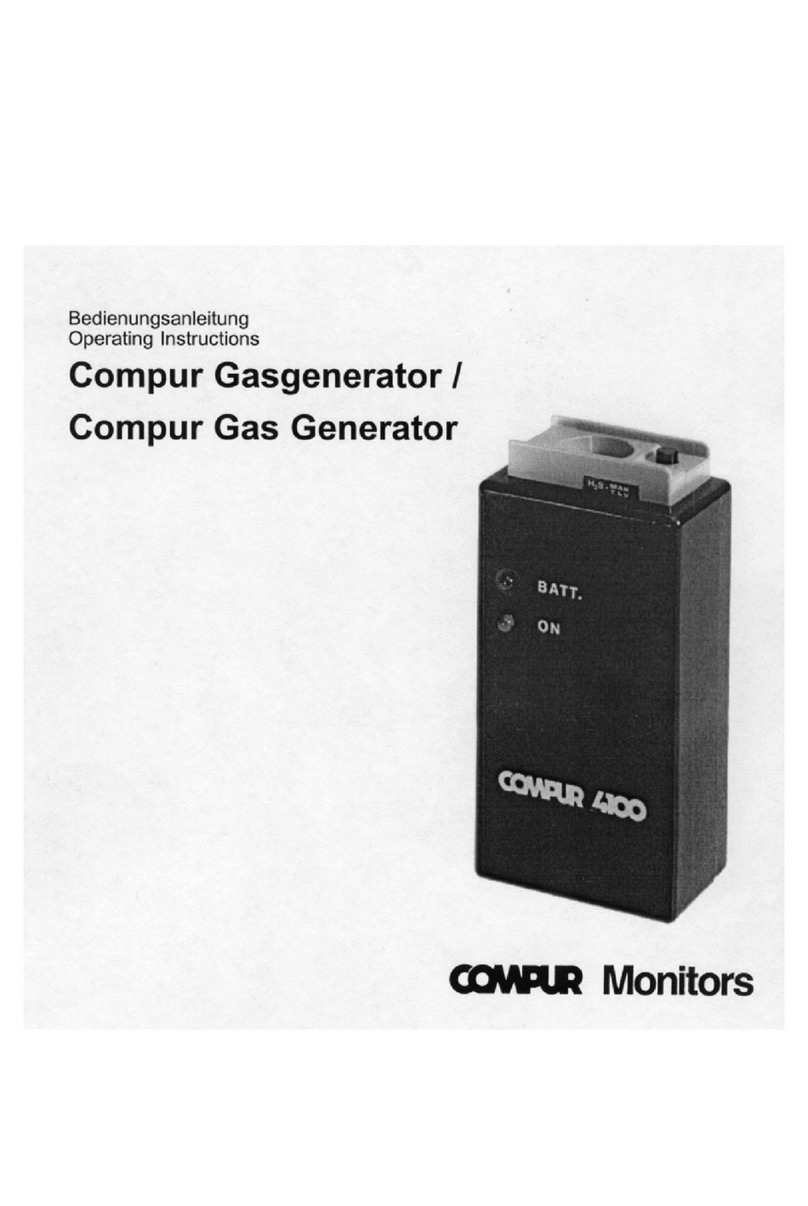
Compur
Compur Gas Generator operating instructions
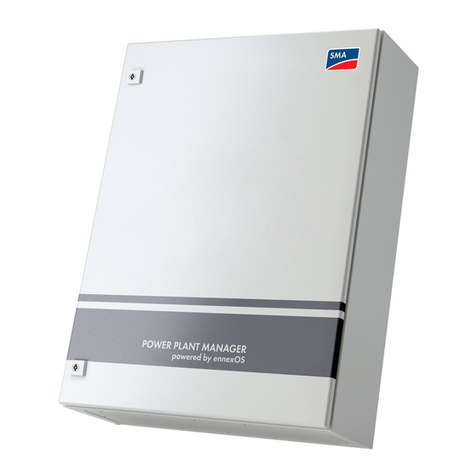
SMA
SMA PPM-10 installation manual
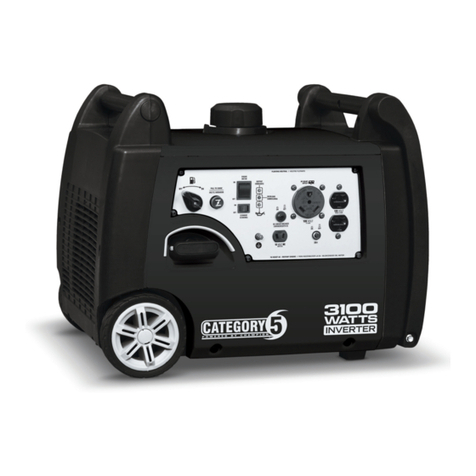
Champion Power Equipment
Champion Power Equipment 75536i owner's manual
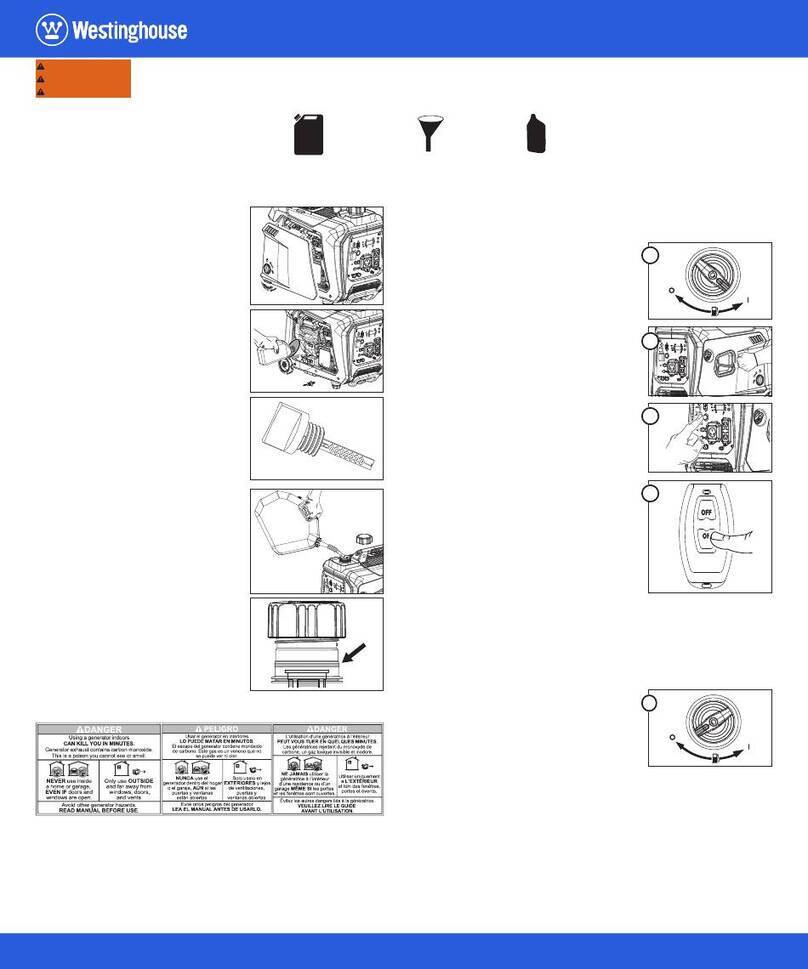
Westinghouse
Westinghouse iGen4000c quick start guide
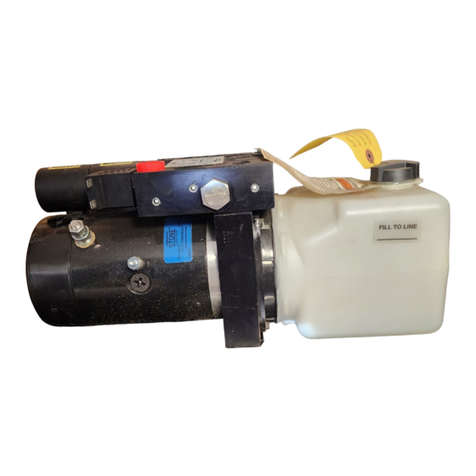
Hiniker
Hiniker DB-7929-1 Service manual
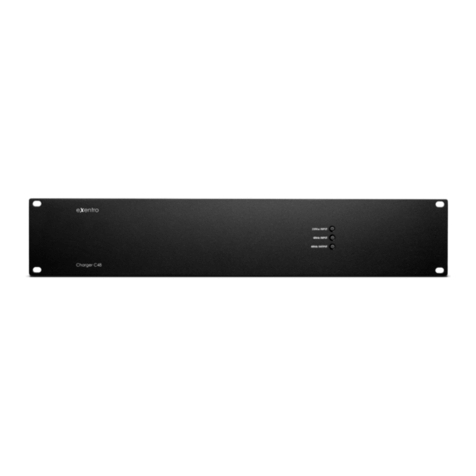
GRAF & MEYER
GRAF & MEYER eXentro Charger C48 Safety and Installation Guideline
